Google Smart Shopping - A Comprehensive Guide on Ad Campaigns
Posted on 11/3/2023
Reviewed by Arnt Eriksen updated at 11/8/2023
Introduction
Google Smart Shopping, launched in 2018, has swiftly captured the hearts of online retailers because of its ease of use and automation. Using smart campaigns, you can efficiently manage your Google Shopping campaign with less effort.
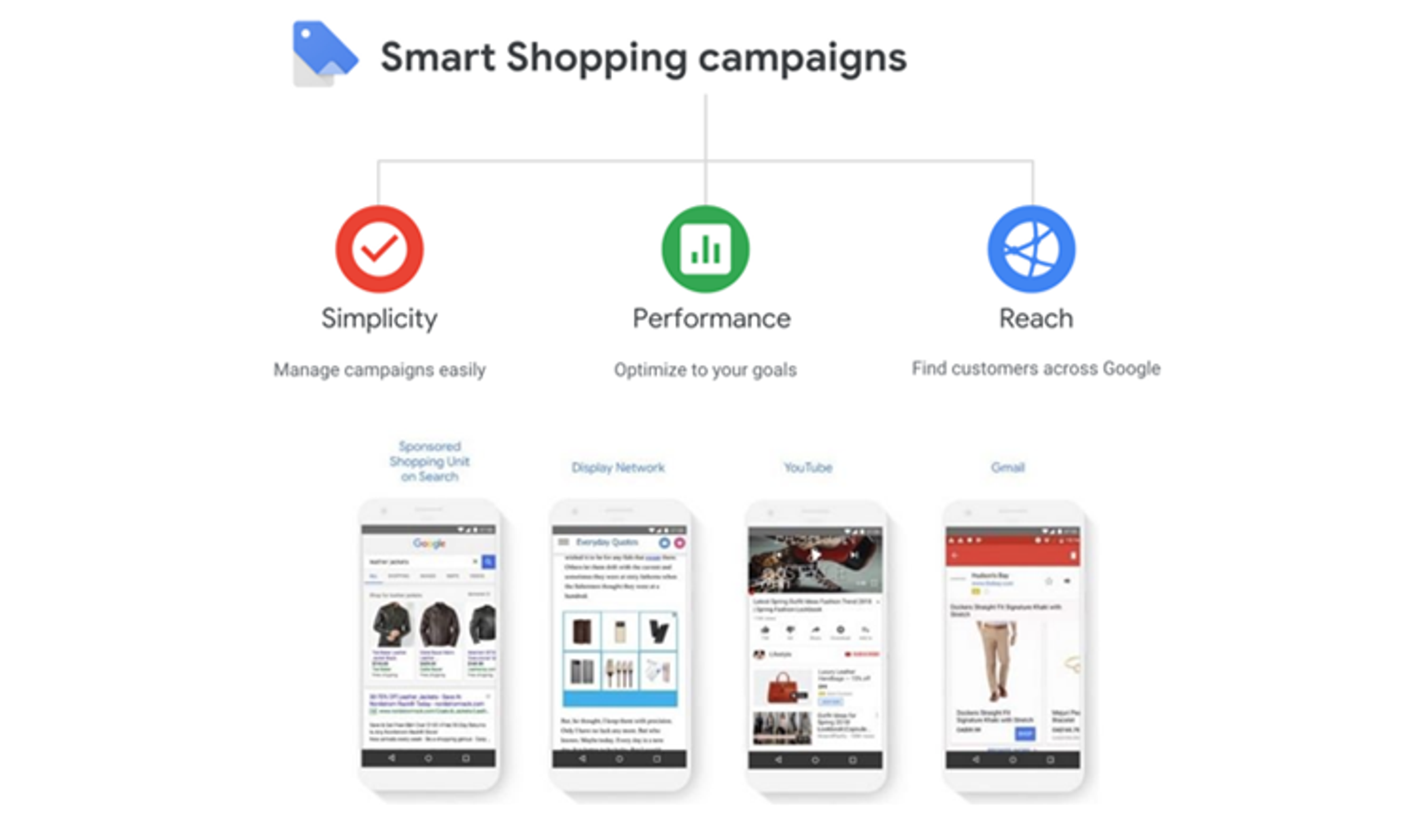
What is Google's Smart Shopping campaign? How does it differ from Google's standard shopping campaigns? How can I easily set up and optimize my shopping ads? All of these questions and more will be answered in today's post.
So, without further ado, let's dive in!
Brief Overview of Google Smart Shopping Campaigns
Google Smart Shopping is an automated, paid advertising tool powered by machine learning. It helps you promote your website or goods and services to a wider audience.
The Smart Shopping platform allows you to advertise your freshly released products to your existing client base through remarketing campaigns. It also lets you promote your content across many Google platforms, including the Google search network, Gmail, the Google Display Network, and YouTube.
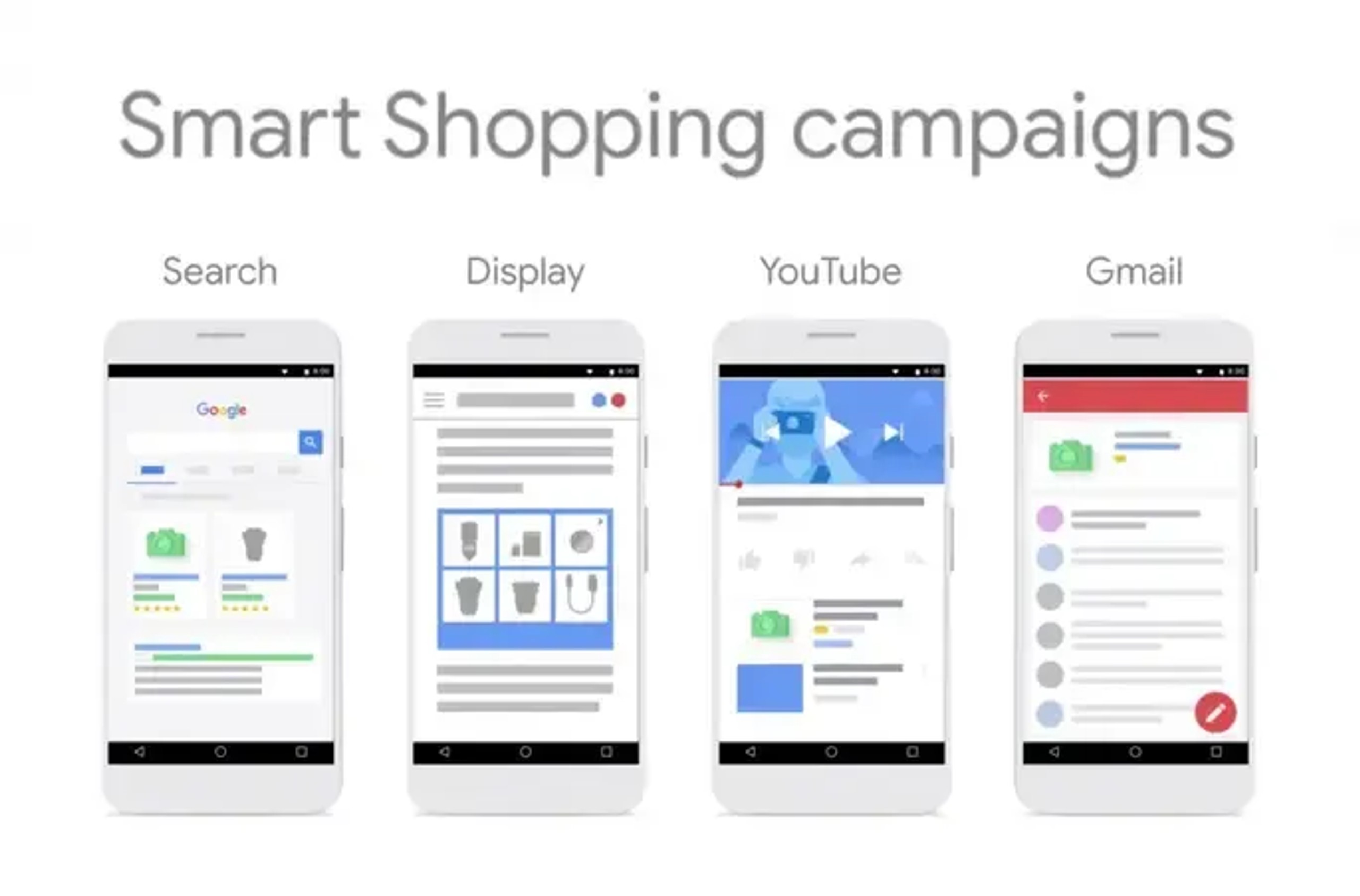
Smart Shopping is unique among advertising formats in that it leverages machine learning to fully automate the target selection process. The system will decide what to do based on the user's location, time zone, gender, and age, as well as their behavior and the SKUs you have available. Therefore, you can achieve your advertising goals and reach your audience without having to work too hard.
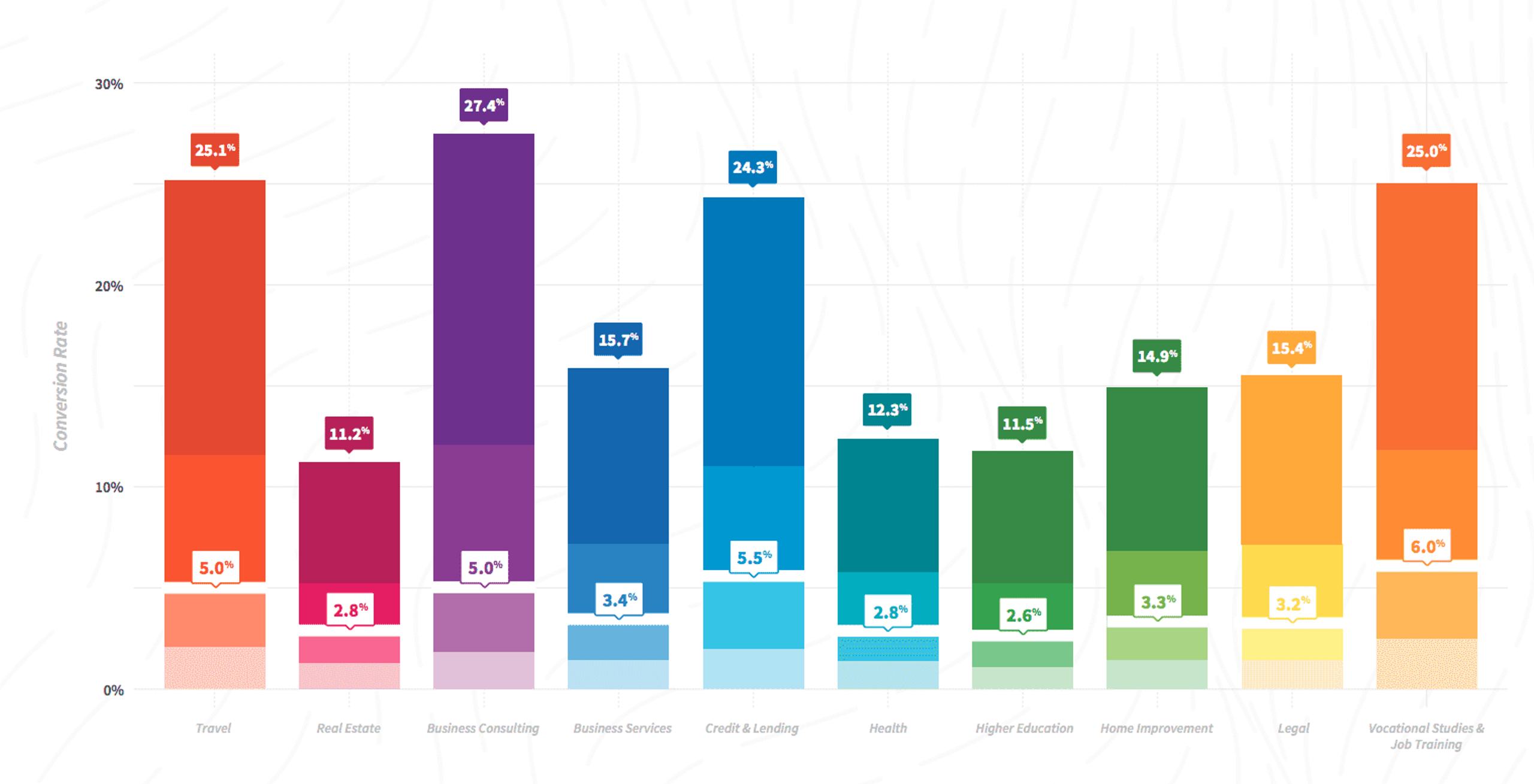
It's also important to note that European-based eCommerce firms can employ smart shopping advertisements with CSS partners like Swoop and Kelkoo. Google claims that advertisers who use its shopping campaigns see a 20% increase in conversion values without increasing their ad spend.
How Smart Shopping Works
Smart Shopping works by making an ad out of the product feed that sellers send to their Google Merchant Center account in the first place. The standard shopping ads and display advertising follow the same basic premise.
Machine learning and automation are what make smart campaigns different. Smart Shopping actually uses old campaigns from retailers and historical data from Google to run promotions. Its goal is to use smart bidding strategies to maximize conversions and improve target ROAS.
Setting up this kind of campaign doesn't take much work. E-merchants just need to choose an optional target ROAS, a budget, and a few creative assets to launch display ads. Then, Google will make an ad based on the product feed that is available. It will automatically show these ads to the right people at the right time and place.
However, you should keep in mind that this smart shopping optimization has some problems. Since Google Smart Shopping campaign structure is automated, advertisers are not able to make manual changes or set up some things. These include:
- Prioritizing campaigns
- Target audiences
- Negative keywords
- Network presence
- Location-based bidding
- Ad schedule
Who Should Use Smart Shopping Campaigns?
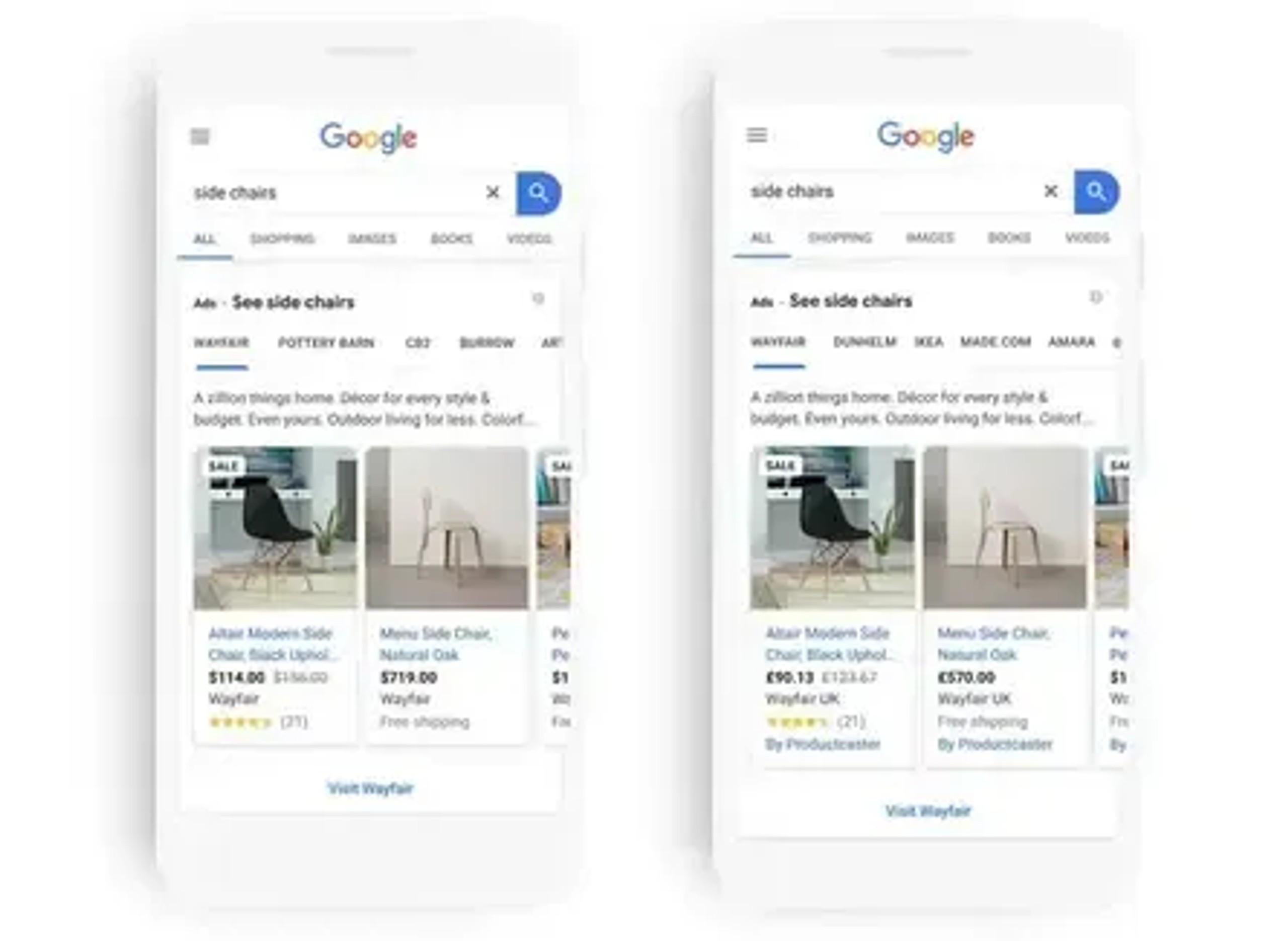
The following are the kinds of businesses that should consider Google Shopping ads:
Small businesses who are new to Google Smart Shopping Campaigns
Smart Shopping's simplicity makes it a great alternative for smaller advertisers who are new to Google Shopping. It's also a good option for companies for whom Google Shopping is a secondary channel for customer acquisition.
Smart shopping campaign ads are good for small businesses for a few reasons. Managing Google Shopping manualy may be difficult and time-consuming for them.
Usually, these businesses lack the resources to hire an agency, an in-house team, or a technology provider to help them. As a result, the Smart Shopping automated bidding strategies are a viable choice.
Businesses Where Owners are too Busy to Focus on Shopping Campaigns
One of the best features of smart shopping is that once it's up and running, you can just "set and forget" it. This means that you don't have to put much effort into marketing to reach your intended audience. As a result, this campaign type is also best for those that don't have the time to manage these product ads on their own.
Businesses Where Owners Have No Particular Strategy
If you want to maximize conversion but have no marketing strategy, this bid strategy is for you. Since Google's machine learning does most of the work, you don't require much knowledge about handling smart shopping campaigns for it to work. Simply set it up and let Google handle the rest.
Large Companies That Have Run Google Ads Campaigns in the Past and Have A Lot of Conversion Data
There are larger companies where online advertising is not a new term. These companies already have a good online presence with their own campaigns. So, with the smart shopping option, they supplement their existing campaigns.
Such companies don't have to worry about how much control they have over these search campaigns. They simply follow Google's advice and modify their campaign from time to time.
Who Shouldn't Use Google Shopping Campaigns

Just as there are businesses that can employ these services to the fullest, there are also businesses that should avoid them. As was previously indicated, there are few options for auditing your campaigns or analyzing the data collected during them. Therefore, it's best to avoid Google smart shopping ads if you fall into any of the following categories:
- A business with a very tight budget
- One that wants to collect real time data for future use
- A business that wants full control on which platforms the campaign will show up on
- A business that wants to control how the budget is allocated and other aspects to maximize conversion value
Smart Bidding

With Google's Smart Bidding, users can change their bids and performance metrics to fit their business's needs. It uses reporting tools that provide visibility into bidding performance and aid in troubleshooting campaigns (unlike Smart Shopping's "black box" approach). Thus, these smart campaigns can help you improve your marketing efforts.
Signals, like a user's device and location, can be used with smart bidding to better target ads to that specific user. You can then narrow in on your ideal clientele by establishing performance benchmarks tailored to their preferred access medium. With the information you get from signals, you can spend less on advertising and focus on profitable opportunities.
Simulators are another tool that Smart Bidding uses. They can predict how well your ads would do if you changed your CPA or target ROAS, allowing you to fine-tune your advertising strategy. This is yet another strategy you can employ to maximize your marketing and your ad budget.
You need to turn on conversion tracking before you can use smart bidding. This will let Google know what your website visitors do after clicking on your ads, which will help you figure out your ROI and profit.
To use Target CPA Google recommends that users have at least 30 conversions in the last 30 days. It also recommends that users have at least 50 conversions before trying out Target ROAS.
What is the Difference Between Smart Shopping and Bidding
Google Smart Shopping is a campaign that includes convenient features like automatic bidding, feed optimization, and simple integration. It's best when you have a large budget to spend. That's because it uses an automated ad creation and bidding system. This will place advertising where it will generate the highest return on investment (ROI) through conversion.
Google bidding, on the other hand, is a type of automated bidding strategy because it uses machine learning. It provides a large number of contextual signals, varying degrees of control over performance, and clear reporting on ad performance.
You can maximize the success of your standard shopping campaign by using one of the bidding methods provided by Google. These bidding methods include target ROAS, target CPA, enhanced CPC, maximize conversions, and maximize conversion value.
A smart shopping campaign is ideal if you want a shopping campaign that you can set up quickly and maintain with no effort.
On the other hand, you might have the time and expertise to put up a traditional shopping campaign. If you would only like to have the bidding procedure at auction time handled automatically, smart bidding is a better option.
What are the Benefits of Google Smart Shopping Campaigns
Although this is not a one-stop advertising solution for every business, it has its benefits. The following are the pros of using a Smart Shopping campaign:
It's an Effective Tool to Advertise Online
When it comes to promoting products online, smart shopping campaigns are among the most useful methods, especially when the end goal is to increase sales. Campaigns optimized for smart shopping can generate more conversion value for the same investment compared to standard shopping campaigns.
With the aid of machine learning, it analyzes millions of data points in real time. This lets it spot patterns and display merchants' ads to the right audience at the right moment, increasing the likelihood of a successful conversion and purchase.
Easy to Set Up and Use
Smart Shopping allows marketers to swiftly expand their reach across Google's display network with no effort. This is because it takes so little time to set up. If you don't have the resources to hire a professional or the time to develop a comprehensive advertising strategy, this is your best option.
The use of automated bidding techniques and machine learning is another major perk. However, this is not restricted to smart Shopping campaigns; in fact, it's available in standard shopping campaigns and even in other campaign types.
Saves Time
One of the best things about smart shopping campaigns is that they can save advertisers a lot of time. That's because they are easy and quick to set up and don't need much manual management or optimization.
This lets advertisers spend more time on the strategic side of their business and less time making small changes to their shopping ads every day. Smart shopping campaigns automatically look at data from queries, intent signals, and customer preferences on brands and products. With this, it finds patterns that correlate with and maximize conversion value.
You Can Analyze Your Performance
Smart shopping campaigns place the most emphasis on performance among other marketing strategies. That means that these campaigns optimize their performance to maximize conversion value or target return on ad spend for the daily budget that you set.
For things like online purchases, signups, purchases over phone calls, and in-store visits, you can set up conversion tracking. Thanks to conversion value and ROAS statistics, you'll be able to assess the performance of the campaign and choose future optimization steps.
Increased Conversions
Google Shopping clicks now account for 65% of all Google Ads clicks. With Smart Shopping campaigns, ads can reach a wider audience across Google networks, like the display network, YouTube, and Gmail. In other words, these Google ads are more likely to reach your target audience faster than other campaign types.
Smart Shopping campaigns distribute an advertiser's budget across various placements based on how well their ads perform. It does this by combining standard shopping campaigns with dynamic ads and machine learning technology.
Inclusion of New Features
Google is busy making new features for smart shopping campaigns that will only make the experience better. This includes video ads, ads that help people find new things, and new betas that help get customers.
All signs point to Google continuing to put a lot of effort into improving Smart Shopping and getting more people to use it. This is because automation is becoming more and more important. Getting to know these campaigns and how to make the most of them will help you run Google ads more smoothly.
What Are the Downsides to Using Google Shopping Ads?
As already noted, Google shopping ads are not an ideal solution for every business. That's because these smart shopping campaigns have a few disadvantages, which we explain below:
Not enough information
Smart Shopping reports show key eCommerce KPIs for each category, product type, and brand, such as clicks, costs, and conversions. However, you can't see information about the audience or the search terms that were used.
You can't even tell which types of ads or platforms work best because all of this information is mixed together. This makes it hard for marketers to find useful insights or get rid of content that isn't working in their campaigns.
Everyone Uses It
Smart shopping's second problem is that everyone already uses it. This could be a great sign of how effective it is. However, as we already mentioned, it doesn't provide you with detailed information about how it separates you from your competitors. So, you can't tell what things to tweak in order to drive more traffic to your site.
Limited Control
Advertisers can't modify their campaign targeting on Google Smart Shopping based on search terms, devices, products, demographics, platforms, or anything else. Targeting a specific location is possible, but only at the national level.
There is also no way to specify a preferred bidding strategy. You can't prioritize retargeting or use negative keywords. Instead, Google will automatically test numerous ad variations to find the most successful ones. So, product ads might be showing up for search terms that aren't relevant to your product.
No negative keyword functionality
One of the greatest downsides of Smart Shopping campaigns is the complete lack of negative keyword options. If you have read our article on them, you should know how important and useful they are for improving the targeting of Google Ads campaigns. To put it short, negative keywords are the easiest way to reduce irrelevant traffic, saving budget and redirecting it to bid on the queries that bring conversions.
If you are already used to utilizing negatives in your other campaigns, Smart Shopping might leave you feeling vulnerable and wide open to incoming irrelevant traffic. The good news is that Smart Shopping's direct upgrade, Performance Max, has campaign-level support for negative keywords. To learn more about how to implement it, check out our article.
Smart Shopping and Performance Max campaigns
While it is not yet time to say goodbye to Smart shopping campaigns, it is worth mentioning that there are clear signs that they will be leaving us soon. Their intended replacement is Performance Max campaigns, which have extended inventory support and an array of features intended to help performance-oriented marketers to pursue their goals.
According to Google, most Smart Shopping campaigns have already been upgraded to their successors - Performance Max campaigns. If you no longer have Smart Shopping campaigns in your account, you will not be able to create any new ones. Do not be discouraged, though. While it may take a while to get used to the new features, you and your business will certainly grow to appreciate them in the long run.
Setting Up Google Smart Shopping Campaigns

Getting started with these smart campaigns is easy. All you have to do is follow a few steps, and your smart shopping campaign will be up and running. Below is a full guide on how to set up these shopping campaigns.
Preparation
Before diving into the main deal, there are a few things you should put in place. These include:
- Setting up your Google Merchant Center and Google Ads account
- Fulfilling Google's basic requirements
- Enabling conversion tracking
- Preparing for remarketing campaigns
Setting Up Your Google Merchant and Google Ads Account
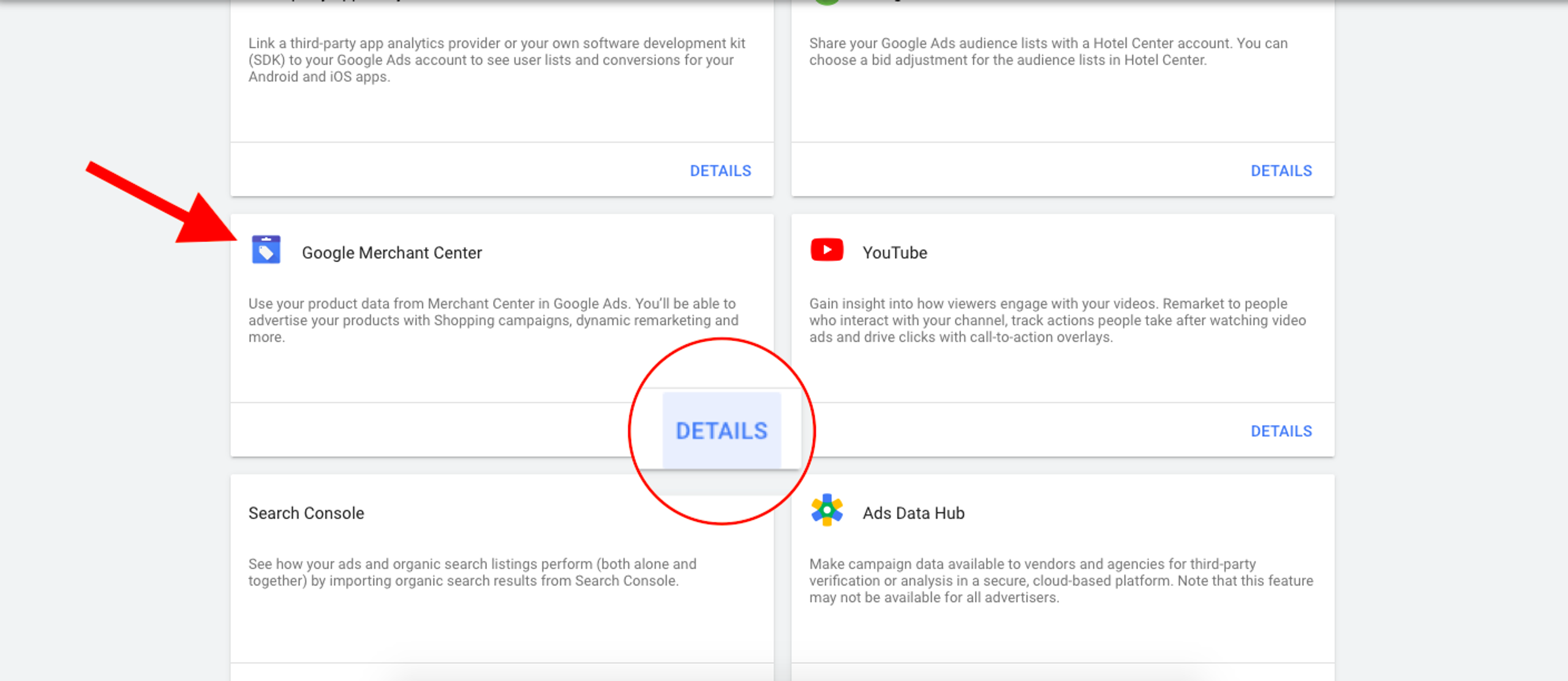
As we've already established, your product feed from Google Merchant Center is what's used to create ads for your Smart Shopping campaigns. Thus, you must sign up for a Google Merchant Center account and connect it to Google Ads. After that, submit a product feed to Google's Merchant Center.
Setting up a Google Merchant Center account is easy, but many businesses have trouble uploading feeds. To make the process easier, you can use tools like Google Sheets and other data feed management software. For example, we prefer to use DataFeedWatch.
Fulfilling Google's Basic Requirements
Google requires a minimum of 20 conversions from standard shopping campaigns before enabling smart shopping. The search engine will use these metrics to learn more about what you offer and how your customers behave. From there, Google will know exactly who to target with your advertisements.

Don't forget to check out the standards and requirements for shopping campaigns and adhere to them to the letter. If Google finds any problems, it could close your merchant account right away. As a result, the paid ads would also stop, which would cause huge financial losses.
Enabling Conversion Tracking
Once this option is turned on, Google will be able to see your conversion data. These include how many people visited your store, signed up, or called you. In the long run, it will use these valuable insights to improve the way your campaign works.
Preparing for a remarketing campaign
Remarketing is a great way to sell your products to people who have already visited your website or bought from you before. Just follow Google's instructions on how to turn on dynamic remarketing by adding two code types. These are the dynamic remarketing event snippet and the global site tag.
Here's how to add these codes:
- Click on Tools and Settings from your dashboard
- Select the "Shared Library" option
- Pick "Audience Manager" afterward
- Choose "Your Data Sources" next
- Then, select the "Create a data source" option
- Click "Install tag"
- Now, fill in the lines of code you've already made and click "Save."

If you don't know how to code, call Google's tech support or hire a developer to help you with this step.
Also, check to ensure that the global site tag is on every page of your website. The event snippet should only be on sites where you want to track what your visitors do.
Next, you should create your remarketing audience list following these steps:
- Navigate to the segments section and click "+ Website visitors."

- Fill in the segment name and select the visitors you'd want to create the segment from.
- Once you've entered other necessary details, select the "Create Segment" option to complete the process.
Simple Steps to Setting Up Your Smart Shopping Campaign
Once you have everything in order, setting up your campaign becomes very easy.
- Choose "Create Campaign" from the "Campaign" section in the navigation bar in the Google ads dashboard. Pick the campaign goal you want and select "smart" as the campaign type.
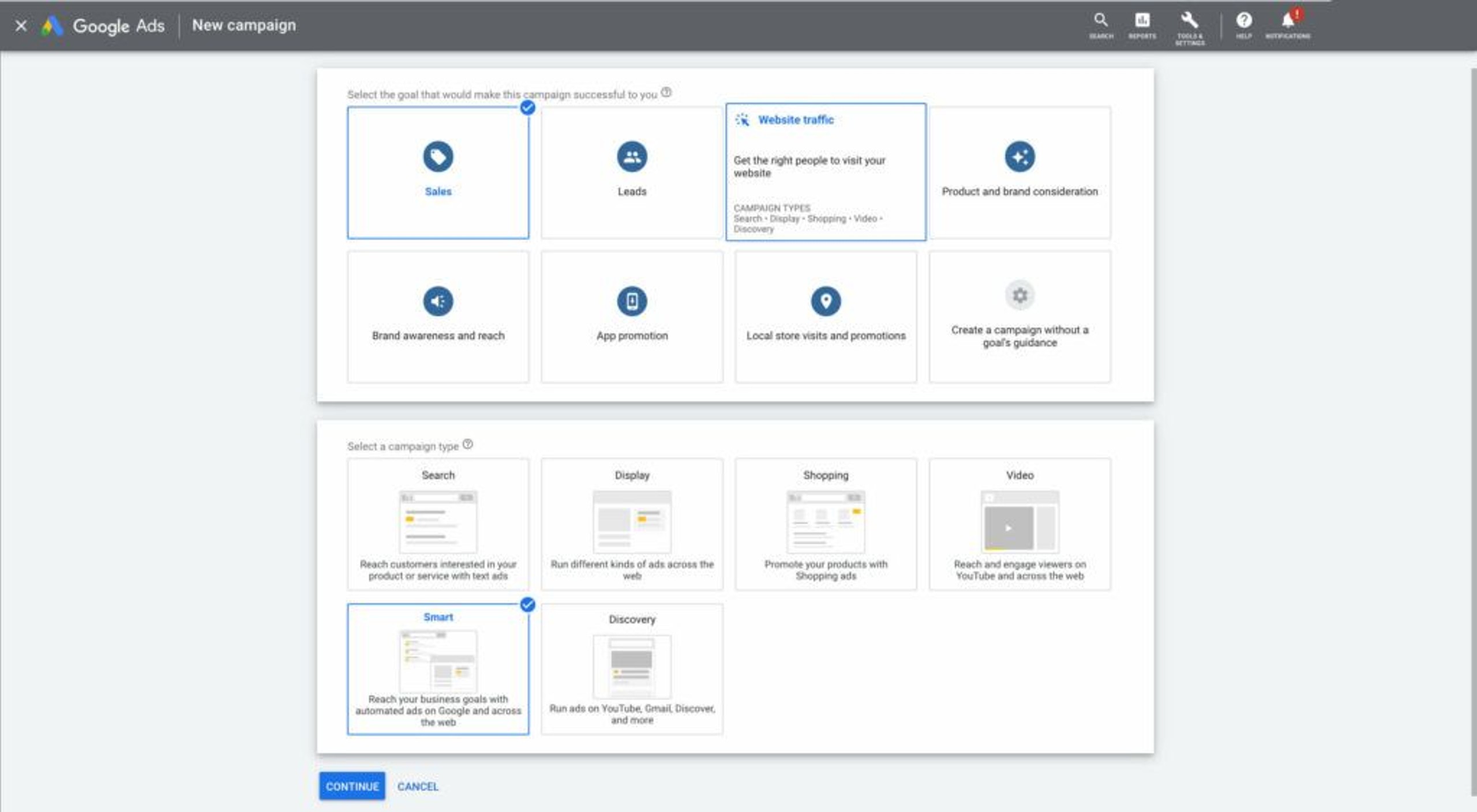
- Select "Continue."
- Provide your website and business name and click "Next."
- Once done, it's time to fill in your content. Start by entering the headlines and descriptions in the designated fields.
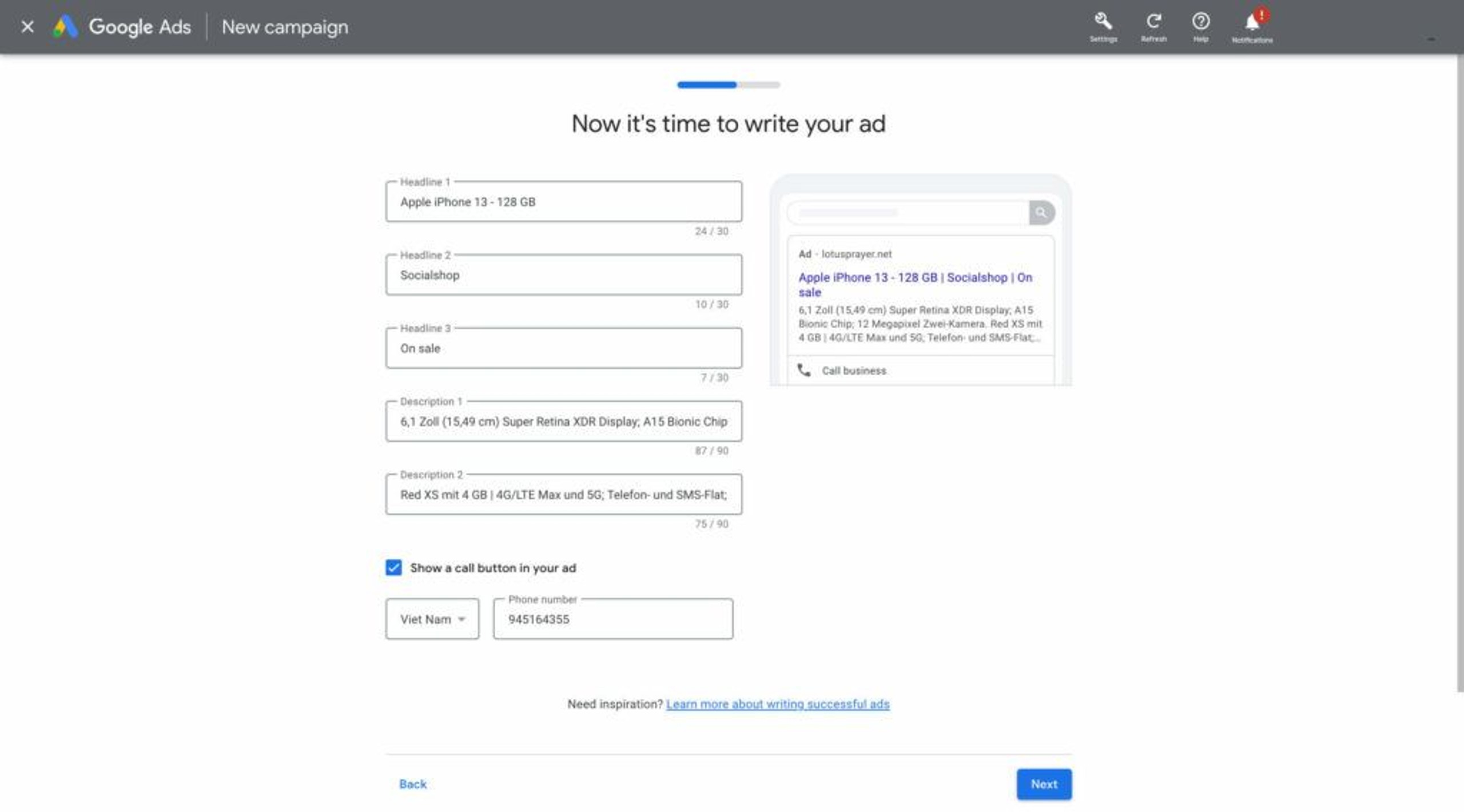
Keep in mind that the headline can only be 30 words long, and the description can only be 90 words long. Make sure to use those words in the best way possible to describe the products you are selling and get people's attention at the same time.
- Fill in the blanks with the keywords and target location and click "Next."
- Then it's time to designate a budget. A budget suggestion should appear on the screen. However, you can always decide on your own budget and how long the campaign will last, and then move on.
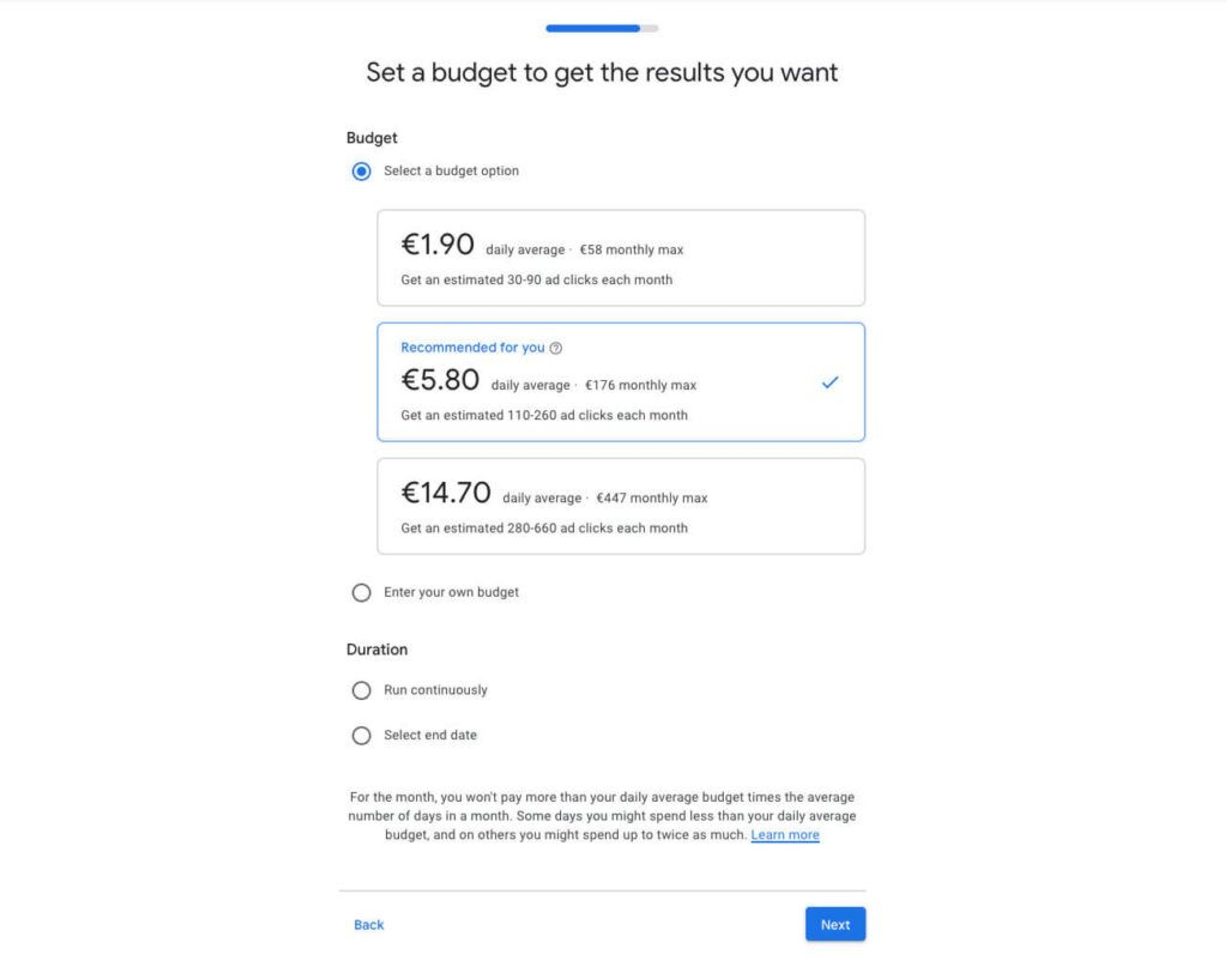
- Google then asks you to look over your campaign one last time to make sure everything is correct. You can go back and edit any field if you want to make changes.
What are Standard Shopping Campaigns?
Standard shopping ads aid in the promotion of your goods by providing customers with comprehensive information about what you're selling before they even click your advertisement. You can then monitor the development of your products over time by using reporting tools that are specifically designed by Google.
What are the Differences Between Standard Campaigns and Google Smart Shopping Ads
There are many differences between Google Smart Shopping and standard campaigns. These distinctions are explained below.
Control
With smart shopping, you have little control over the campaign. On the other hand, the normal shopping option gives you full control over your ads. You can determine where the advertisement appears, your target audience, and your budget.
Setup
You need to set up standard campaigns on the Google Ads platform, which could be time-consuming. However, smart shopping works with automated bidding strategies. Thus, setting them up is easier, while the machine-learning technology runs the ads for you.
Maintenance
Google smart shopping results require almost no maintenance. However, if you opt for standard options, you must put in efforts toward maintaining and optimizing them.
Conversion Data
While you can run standard campaigns from scratch, the same can't be said for a smart shopping campaign. You need conversion data for your smart shopping ads to run effectively.
Location Targeting
One thing to note about Google Smart Shopping is that it has limited location targeting options. On the other hand, you can set more location-specific goals with standard ads.
Is it Possible to Run Both Standard and Google Smart Shopping Ads Together?
You can do so, but be careful with such a decision. Each campaign type has its advantages and disadvantages.
For instance, it would be unwise to promote niche products with Smart Shopping ads. Google may lack the necessary information to optimize your conversion rate in this case.
Also, keep in mind that Google has stated that Smart Campaigns are prioritized over regular campaigns if you're advertising the same things. This makes smart shopping a preferable option in many instances.
Best Practices for a Smart Shopping Campaign
Here are some suggestions from industry professionals that you can use to improve your Google Shopping campaigns.
Don't Expect Big Changes to Happen Right Away
Since it's an automated process, Google will mostly use the information you give about your campaign. Therefore, when you first start out or make significant changes to your advertisements, Google requires time to recalibrate; this is known as the learning period.
Don't worry if you don't see an instant boost in performance; Google is just analyzing the new information to determine how to best optimize your campaign in light of the modifications you've made.
Choose the Right Bidding Strategy
Google Smart Shopping uses an automated bidding strategy. So, the only way you can affect the bidding is by choosing the right bid strategy.
You don't really have to set a target ROAS for the smart campaign to work. However, if you pay attention to this, it could give you a small edge over the other businesses in your field.
Google also recommends that you don't set the target ROAS right away because that could make it harder for the search engine to learn. However, once you have some conversions, you can proceed with setting ROAS.
Remember to set it a little below what you really want. For example, if you think you'll get a 470% ROAS, you should leave it at 450–460%.
A goal that is lower than your expectations will always work, but a target that's more aggressive could cause problems. In the example above, if you set a goal of 500% or more, Google is likely to stop showing your ads. That's because it can't make 500% work.
Avoid Reusing Product Images From Standard Shopping Campaigns
Showing your products against a white background is recommended for typical shopping advertising. The situation is different with smart shopping.
Assets for a display campaign like Smart Shopping need to be innovative and engaging enough to encourage viewers to make a purchase.
Before you set up Google Smart Shopping, you need to gather a selection of high-quality images and banners. If your campaigns have already begun but you're not happy with the results, switching the pictures can help.
Optimize Your Budget
Your total spending needs to stay in line with your standard shopping campaign. So, you should make a budget for your smart shopping campaign based on previous ad campaigns.
Also, don't make drastic changes to your budget. Remember that Google uses machine learning, so it'll take a while to learn new budgets. The more you change, the longer it takes to adjust.
Evaluating Your Results
At least 35 days should pass before you look at the data and draw conclusions. If you like what you see, you can keep adding product groups until the whole catalog is included. However, if you're not satisfied with the results, try to figure out what's wrong and where you can make changes.
It's possible that you need to change your headlines or images. Another way to figure out what's wrong is by comparing your competitor's price to yours. You might be using the wrong discount strategy, or your products are too pricey.
Conclusion
In a nutshell, Google Smart Shopping allows us to sell on their platform with little to no work on our part. However, increasing the reliance on machine learning does not guarantee a rise in sales. Find out what works best for you and your company, then implement it in your campaigns.
It should be noted that, while not yet gone, Smart Shopping Campaigns are on their way to being succeeded by Performance Max campaigns. Still, even if you are just starting out on your digital marketing path, learning what your ancient predecessors used could give you insights into how Google Ads evolved and what led it to become the platform it is today.
